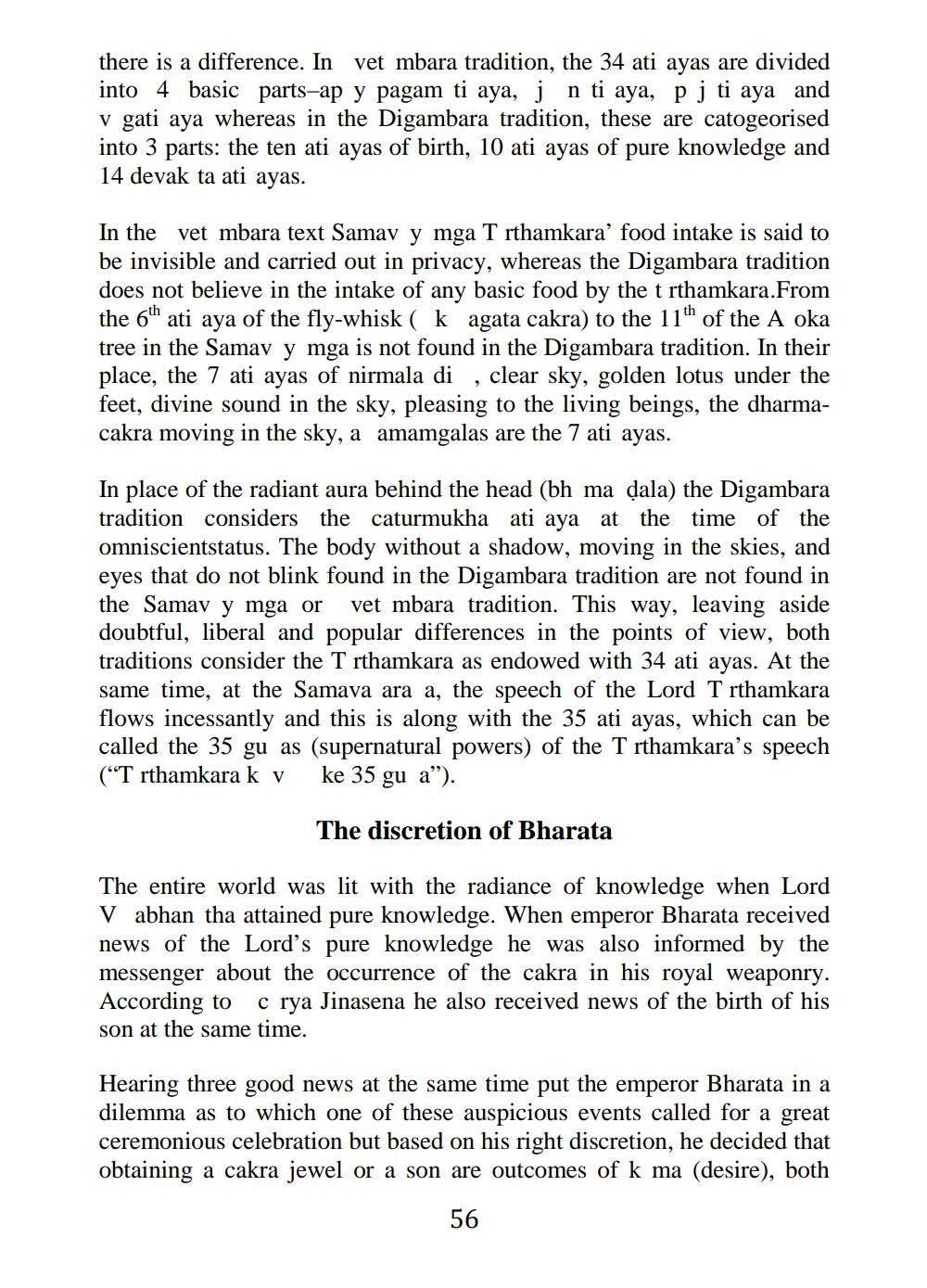________________
there is a difference. In vet mbara tradition, the 34 ati ayas are divided into 4 basic parts-ap y pagam ti aya, j n ti aya, p j ti aya and v gati aya whereas in the Digambara tradition, these are catogeorised into 3 parts: the ten ati ayas of birth, 10 ati ayas of pure knowledge and 14 devak ta ati ayas.
In the vet mbara text Samav y mga T rthamkara' food intake is said to be invisible and carried out in privacy, whereas the Digambara tradition does not believe in the intake of any basic food by the t rthamkara. From the 6th ati aya of the fly-whisk ( k agata cakra) to the 11th of the A oka tree in the Samav y mga is not found in the Digambara tradition. In their place, the 7 ati ayas of nirmala di , clear sky, golden lotus under the feet, divine sound in the sky, pleasing to the living beings, the dharmacakra moving in the sky, a amamgalas are the 7 ati ayas.
In place of the radiant aura behind the head (bh ma dala) the Digambara tradition considers the caturmukha ati aya at the time of the omniscientstatus. The body without a shadow, moving in the skies, and eyes that do not blink found in the Digambara tradition are not found in the Samav y mga or vet mbara tradition. This way, leaving aside doubtful, liberal and popular differences in the points of view, both traditions consider the T rthamkara as endowed with 34 ati ayas. At the same time, at the Samava ara a, the speech of the Lord T rthamkara flows incessantly and this is along with the 35 ati ayas, which can be called the 35 gu as (supernatural powers) of the T rthamkara's speech ("Trthamkara k v ke 35 gu a").
The discretion of Bharata
The entire world was lit with the radiance of knowledge when Lord Vabhan tha attained pure knowledge. When emperor Bharata received news of the Lord's pure knowledge he was also informed by the messenger about the occurrence of the cakra in his royal weaponry. According to crya Jinasena he also received news of the birth of his son at the same time.
Hearing three good news at the same time put the emperor Bharata in a dilemma as to which one of these auspicious events called for a great ceremonious celebration but based on his right discretion, he decided that obtaining a cakra jewel or a son are outcomes of k ma (desire), both
56




